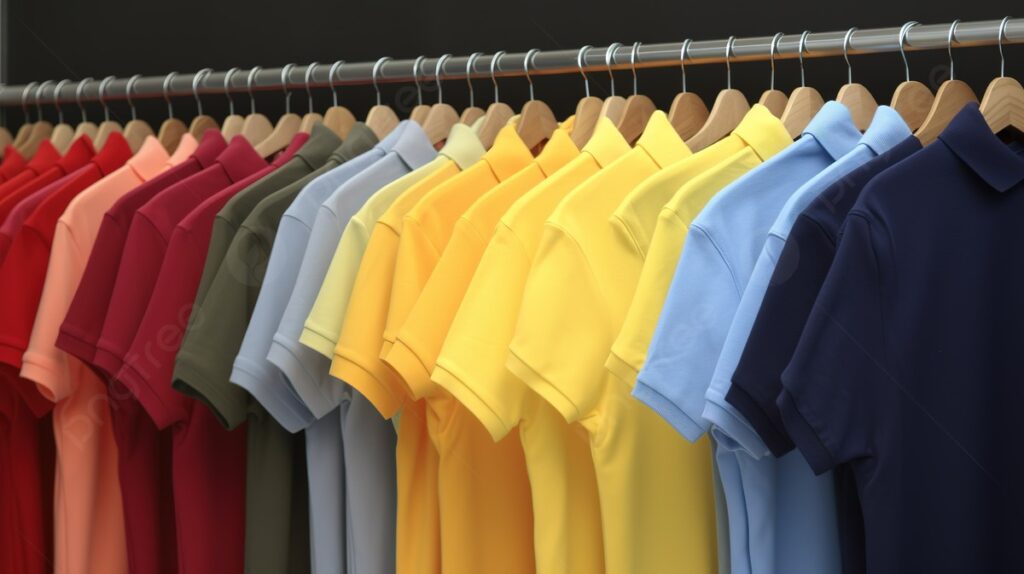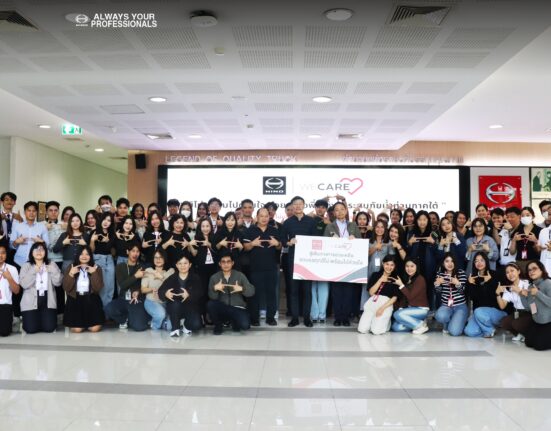Written by: Jakkrit Siririn
Ticy City, at this moment, would like to trace the historical journey of the “polo shirt” as a fashion innovation for semi-casual and semi-formal attire.
Jean Rene Lacoste, a French Grand Slam tennis champion with seven titles, was the first in the world to design the “polo shirt” in the style we recognize today. Naturally, a familiar surname like that can only be associated with the “crocodile brand” shirts, Lacoste, made of “Montagut” fabric. Haha!



It is well-known that the “polo shirt” is an “innovation” that combines the “dress shirt” and the “T-shirt.” Generally, “dress shirts” are worn for office work or formal occasions, while “T-shirts” are worn at home, for shopping, or for casual strolls. Combining the “dress shirt” with the “T-shirt” to create the “polo shirt” effectively addresses the convenience needs of gentlemen. It brings the casualness of the “T-shirt” with the addition of a collar, making it appear more formal. Furthermore, ladies can also wear it.
Semi-casual, semi-formal, neat because it has a collar and a few buttons, easy to wear, and still looks good. Wearing a suit over it makes it even more formal. Truly, it is a brilliant innovation by the person who invented the “polo shirt.”
Origin of the term “polo shirt”
In the colonial era of the 19th century, the United Kingdom, or England, expanded its military, political, economic, social, and cultural influence. Sports were one aspect that England widely spread in its colonies, especially “polo,” “cricket,” and “hockey.” Today, former British colonies like India excel in “polo” sports, rivaling England, particularly in “hockey.”

From the perspective of polo players at the time, their attire was usually collared shirts made from thick fabrics like Oxford cotton, which had no elasticity. The shirts resembled long-sleeved dress shirts with buttons at the neck, making them feel quite restrictive. However, despite efforts to adapt polo players’ attire, especially in significant colonies like India, where they modified the fabric for the hot climate and changed the shirts from long sleeves to short sleeves, the “polo shirt” as we know it today did not yet take shape.

It wasn’t until Jean Rene Lacoste, a French Grand Slam tennis champion, designed the “polo shirt” in the style we know today. Lacoste designed the “polo shirt” for himself to wear while competing in tennis tournaments, particularly in hot regions, as traditional tennis attire was not flexible and caused discomfort during matches.
Despite Jean Rene Lacoste showcasing his self-designed “polo shirt” to the world for the first time at the U.S. Open, another major Grand Slam tournament, in 1926, there were debates about who actually invented the “polo shirt” design.

On some occasions, descendants of Brooks Brothers, a luxurious American clothing brand, claimed that Brooks Brothers invented the “polo shirt” design in 1896, having designed polo shirts for the English national team. Jean Rene Lacoste did not respond to these claims and proceeded to establish his clothing company under the “crocodile” brand in 1933, known today as Lacoste. The brand’s signature product is the globally renowned “crocodile logo” polo shirt.
The difference between Jean Rene Lacoste’s design and Brooks Brothers’ design is not about the “short-sleeved collared shirt” or the “three-button collar shirt,” but the primary difference lies in the fabric. Jean Rene Lacoste’s “polo shirt” used stretchy fabric suitable for tennis, while Brooks Brothers still used the same fabric as “dress shirts.”

Ralph Lauren: Bringing the “polo shirt” to the fashion mainstream
Even though the battle between Jean Rene Lacoste and Brooks Brothers did not conclusively determine the true inventor of the “polo shirt” design, in 1972, Ralph Lauren took Jean Rene Lacoste’s polo shirt design to the mass market, boldly naming his polo shirts “Polo Ralph Lauren.”
The fight between Jean Rene Lacoste and Brooks Brothers thus shifted to a rivalry between Jean Rene Lacoste and Ralph Lauren. However, today, Jean Rene Lacoste is no longer interested in the design disputes, and Ralph Lauren himself seems to have given up the fight.
Nowadays, the “polo shirt” has evolved from “sportswear” to a “fashion item” with varying colors and patterns, though the design by Jean Rene Lacoste remains. However, its original purpose has transformed the “polo shirt” into a “mass product” favored by everyone, regardless of gender or age.
“Marketing value of the ‘polo shirt'”
Currently, the “polo shirt” design is used in various productions, from leading global brands to market stalls. It is estimated that the market value of the “polo shirt” in 2019 was as high as $5 billion, expected to increase to $5.7 billion by 2024.

Among these brands are Lacoste and Brooks Brothers, the two innovators of the “polo shirt” design. Other familiar brands include Banana Republic, Ralph Lauren, Calvin Klein, Burberry, Prada, Hugo Boss, Gucci, Tommy Hilfiger, J. Press, Zara, H&M, and Uniqlo.
The “polo shirt” is like other “innovations” where the original inventor may not profit as much as they should, similar to how Thomas Alva Edison did not fully capitalize on the market benefits of the “light bulb.”















Leave feedback about this